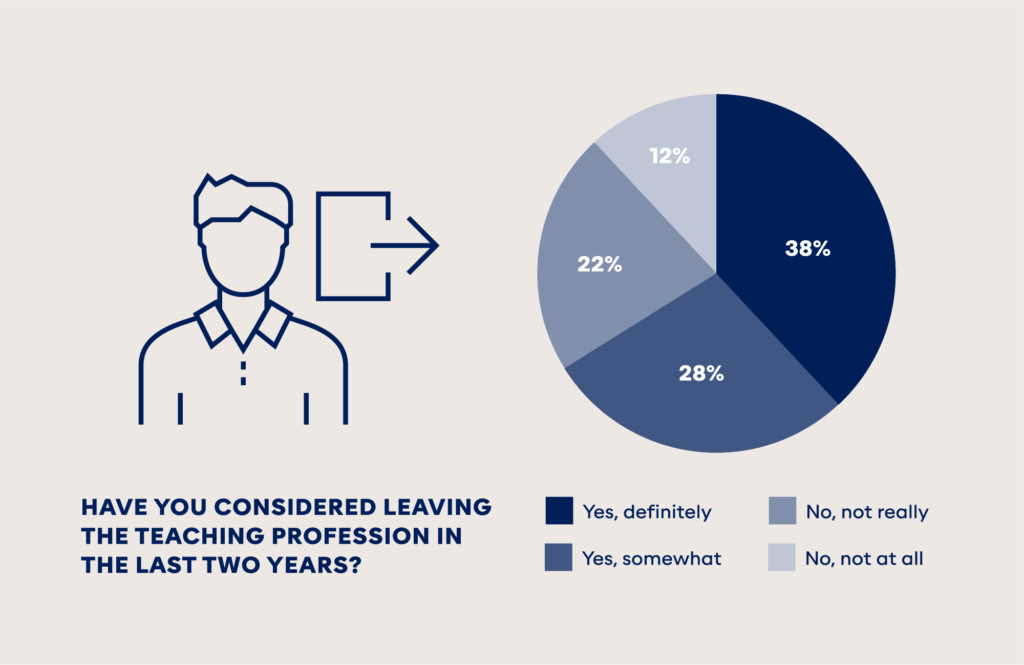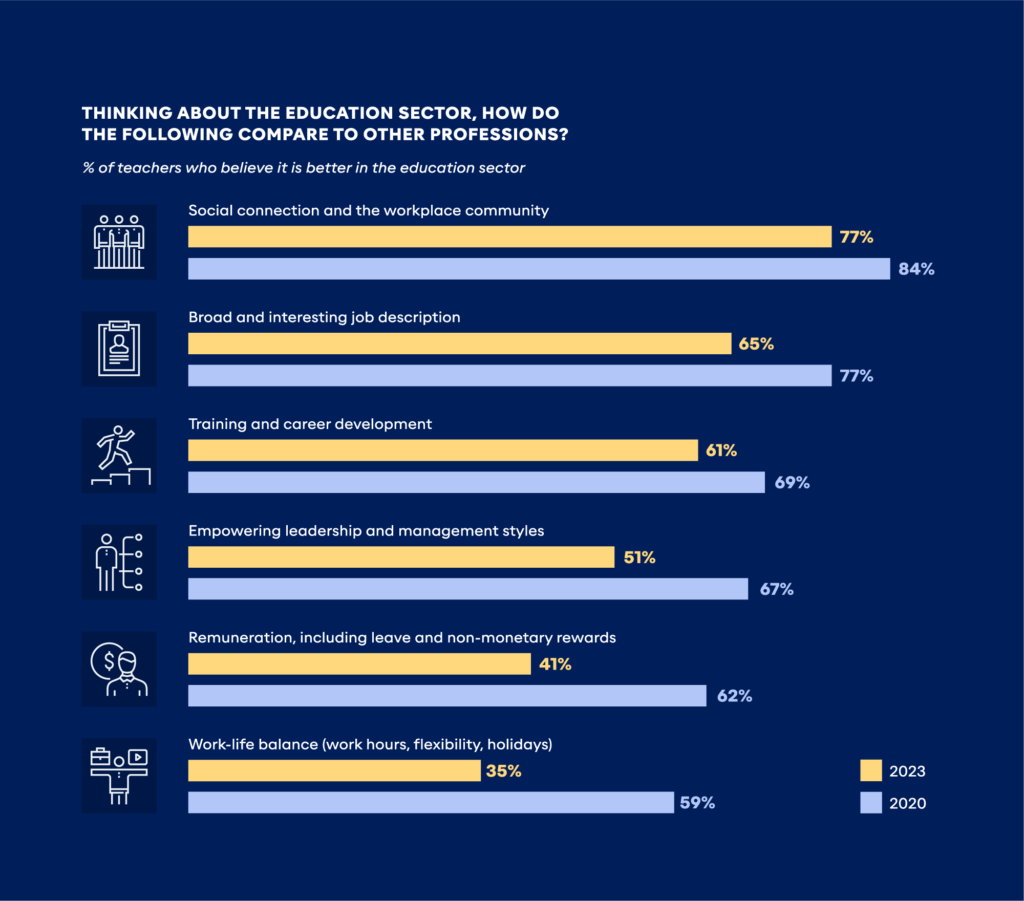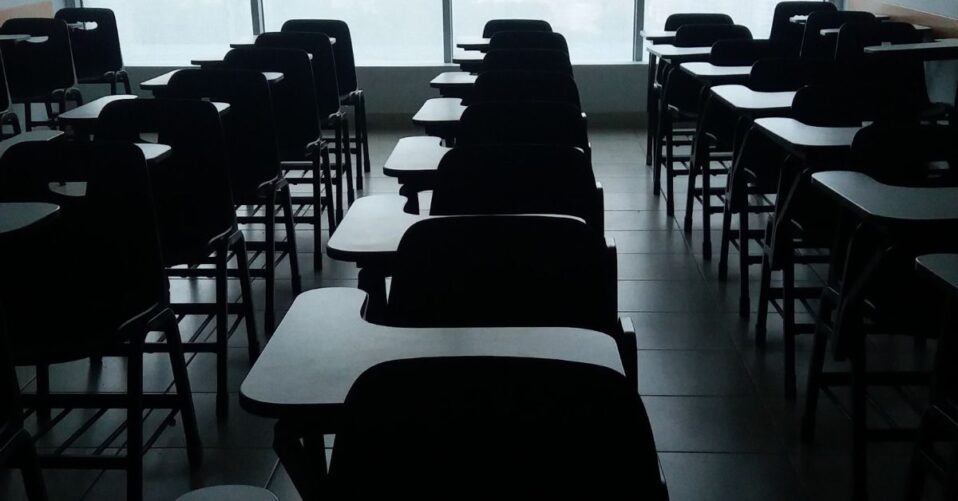By: McCrindle
Teachers play a vital role in society. They are at the forefront of equipping the next generation with the skills they need to thrive.
In fact, a society’s strength and success are often connected to the quality of education that it provides. With a growing population and increased importance placed on life-long learning, the education sector is set to play a vital role in communities for many years to come.
The workforce, however, may not be able to keep up with demand. Levels of burnout are high and there are significant challenges in attracting and retaining the next generation of teachers. To ensure a sustainable future this needs to be understood and responded to.
Two Thirds of Teachers Have Recently Considered Leaving
Prior to the pandemic, teachers were busy. Now, considering the last few years and the demands placed on teachers, sentiment across the sector is low. Two thirds of teachers (66%) say they have considered leaving the teaching profession in the last two years. This is not just a fleeting thought but likely to translate into action with the largest proportion of teachers (38%) saying they have definitely considered leaving.
Teachers who have considered leaving the profession in the last two years are three times more likely than those who haven’t to feel extremely/very burnt out after the experience of adapting to changes throughout the pandemic (44% cf. 15%).
The expertise and knowledge the sector could lose is significant, with three quarters of teachers with 11+ years of experience (75%) having considered leaving. This makes them the most likely cohort to do so, followed by 71% of those with 6-10 years’ experience.
Concerningly, more than half of those who have been working in the education sector for five years or less have also considered leaving (54%).
Teachers are not just considering leaving, they are also not recommending the profession to others. Currently, just 24% of teachers would be extremely or very likely to recommend a career in teaching to someone looking to start or change careers. This compares to 53% in 2020. Without attention and investment, there are significant workforce challenges on the horizon.
Teachers Feeling Overworked and Stressed
Seven in ten teachers (72%) believe the biggest blocker to them thriving at work is being overworked and stressed. Teachers are 1.8x more likely to hold this view than the next most likely blocker of limited flexibility (39%), highlighting the significant impact this plays. A key factor may be in the expectations of what teachers need to accomplish in their role.
Currently three in four teachers (73%) strongly/somewhat agree they often feel overwhelmed by the amount of work they need to achieve in a week. This has flow on effects to the student experience with just 17% of teachers strongly/somewhat agreeing they have enough time to prepare for effective teaching.

Covid-19 Accelerating Burnout
The education sector had to pivot to digital learning environments almost overnight in COVID-19. Once lockdowns were lifted and school gates were open, it was a challenge to provide continuity in education with staff shortages and sickness. This experience has taken its toll on teachers.
In fact, almost four in five teachers (78%) feel burnt out after the experience of adapting to changes throughout the pandemic, and just over a third (34%) feel extremely or very burnt out. This burnout is playing a role in the retention of staff, with those who have considered leaving the teaching profession in the last two years three times more likely than those that haven’t to feel extremely or very burnt out after the experience of COVID-19 (44% cf. 15%).
Declining Satisfaction in Workload and Pay
The experience of teaching has undergone a shift in the last few decades. There was a time when it was viewed as a profession with lifestyle benefits – namely that of allowing a balance for work, family and life. In recent years, however, there has been a steady professionalisation of the education sector, while at the same time other sectors have improved their lifestyle offerings.
The responsibilities of teachers are also growing, and teaching is not as aspirational for the emerging generation which means the pipeline of young teachers coming through is waning.
Teachers on the frontline are feeling this shift with declining sentiment around all elements of the role since 2020. The largest decline is in work-life balance reducing from 59% in early 2020 to just 35% who believe it is better in education than other sectors. Remuneration follows a similar trajectory declining from 62% to 41%.

With almost nine in ten teachers (86%) seeing teacher burnout as the greatest disruptor in education for the next decade, followed by attracting and retaining teachers (72%), there is a need for schools to shift the narrative and experience for teachers.
How can Schools Tackle Teacher Burnout?
- Invest in culture
The work environment has a significant impact on workers, so much so that a workplace culture is one of the greatest attractors to new organisations. It is no longer a nice to have but essential. It is important for educational leaders to invest in the culture of the school and ensure they are providing and measuring the seven components of healthy culture. Particularly because the individual school plays a significant role in attracting teachers, not just the sector as a whole.
- Invest in training and development
A key component in attracting and retaining the next generation of teachers is establishing the school as a learning organisation for the staff. This is important because currently just 40% of teachers strongly/somewhat agree they are receiving adequate opportunities for professional development.
Teachers who have not considered leaving the teaching profession are 1.9x more likely than those who have, to strongly/somewhat agree they are receiving adequate opportunities for professional development (58% cf. 31%). This highlights the important role training and development plays in retaining staff.
- Explore innovative approaches to flexibility
A key driver of the future workforce is flexibility. COVID-19 accelerated the shift to flexible working and decoupled work from the workplace. Flexibility is inherently difficult to provide in place-bound employment such as the education sector where the expectation and duty of care requires face to face engagement.
However, when teachers who have considered leaving the profession were asked what the biggest enticement has been to consider other professional roles, greater work/life balance (72%), and the ability to work from home (44%) were at the top of the list along with greater flexibility on hours (44%) and remuneration (38%).
Considering this, it is essential to explore new ways of providing greater flexibility and balance for teachers to remain competitive as other sectors improve their lifestyle offering.
Teaching has long been thought of as the noble profession because of its significant impact on society. There are significant challenges on the horizon for the sector. However, there are steps that can be taken to shift the narrative and invest in teachers today to set up the sector for a sustainable future.
Article supplied with thanks to McCrindle.
About the Author: McCrindle are a team of researchers and communications specialists who discover insights, and tell the story of Australians – what we do, and who we are.
Feature image: Photo by Rubén Rodriguez on Unsplash




